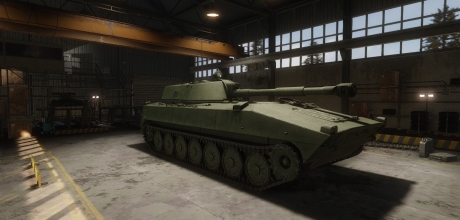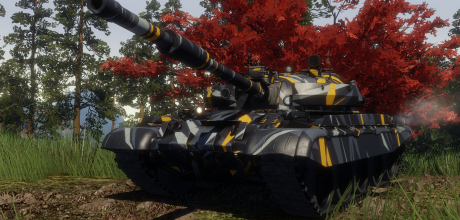
When discussing tanks with anyone who is not a fan or an expert, there are only a few vehicles pretty much everybody knows – the German Tiger and Panther tanks, the T-34, the T-54... and, of course, the T-72.

Much like its predecessor, the T-54/55 series, it can be said that the T-72 became an icon of sorts, its sleek silhouette firmly connected with the Soviet Union (or, in the case of the United States, the Gulf War) in the minds of military enthusiasts all around the globe. Whether it’s an image of a horde of these machines creeping through an East German forest or massive groups of them burning in the middle of an Iraqi desert, the T-72 is, without a doubt, one of the most widely recognized tanks in the world.
In the past, we discussed some more advanced versions of the vehicle, such as the T-72A or the T-72B. Today, we will take a look at how the legendary tank came to be.
Let us start in the early 1960s, specifically in 1963, when the Malyshev plant in Kharkov received the first mass-production orders for the T-64. The early history of the T-64 is described in a dedicated article and is, in a way, closely related to the birth of the T-72. As a part of the mass-production program, a decision was made to build the T-64 not just in Kharkov, but also in the other Soviet tank production facilities like the one in Nizhny Tagil belonging to Uralvagonzavod where the T-62 medium tank had been produced at the time.
It can be said that in the early 1960s, the T-64 was a tank without equal – both outside of the Soviet Union and inside it as the other tank developers were not able to produce something so powerful and, at the same time, very light. Of course, the power of the T-64 came with a price tag – the tank was cramped. The 125mm T-64A that came after it was difficult to upgrade as the entire design was made with insufficient upgrade potential in mind. In other words, it was a cutting edge vehicle at the time, but left little room for improvement.
Additionally, some of the solutions that kept the weight low, like using the very compact 5TD series engine, left the tank with severe reliability issues that were only gradually ironed out – the early 1964-1965 production vehicles, some 250 tanks in total, were in use for less than four years before they were removed from service for being unreliable. Needless to say, building over two hundred tanks only to phase them out four years later was a very high price for A.A. Morozov’s dream of building the ultimate battle tank.
Another matter was the parallel development of the T-64 and its successor, the T-64A that came roughly five years after it. At first glance, it makes no sense to develop and build a separate variant and push it into production only to have it made obsolete almost immediately by something better – why not wait a couple more years and just start building the new variant?
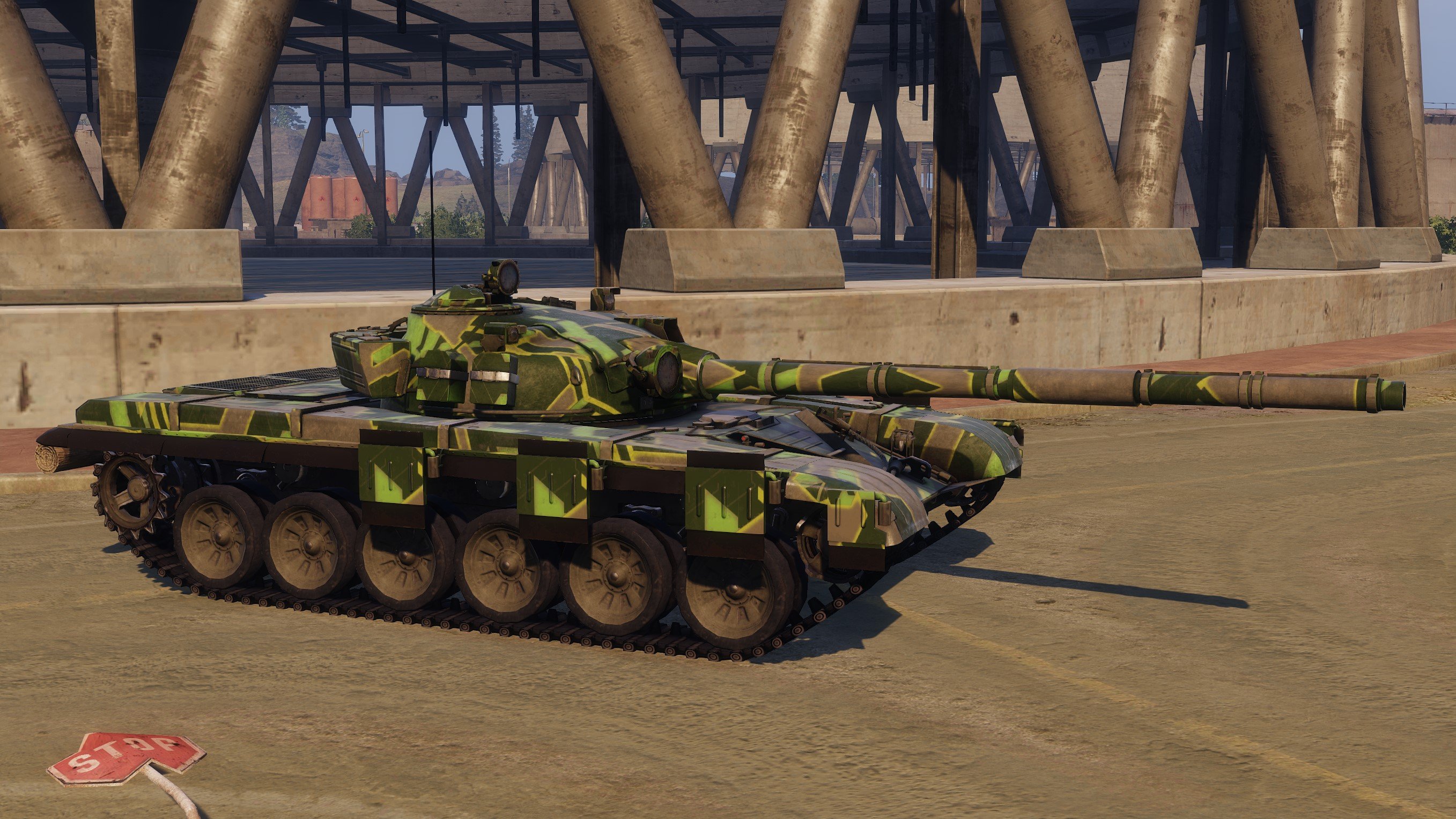
The reasons for that were, more than anything else, connected to some rather practical thinking. If the Kharkov T-64 production was delayed until the launch of the T-64A – what would the factory do during those years?
Sure, they could produce the T-55 as they did, but the T-55 was already considered obsolete at that point. One does not receive the Hero of Socialist Labor award (and all the advantages connected to it, like more money and other bonuses for the leadership of the company) for mass-producing an obsolete tank. But designing and producing a cutting edge tank – well, that’s another story. The T-64 was also very expensive – that too meant more budget money and more money in the general budget meant that more of it could get “diverted” to other projects. And if you have to retire 250 of your tanks for being unreliable later on... oh well.
This kind of thinking was very common in the Soviet Union despite the propaganda attempts to depict its citizens as working solely for the good of socialism – it is human nature to behave thus and no society is exempt from it.
Returning to the T-64, as we mentioned above, one of the key weaknesses of the tank was the engine. The 5TDF was a compact but highly unusual design that was very unreliable in its first mid-1960s iterations to the point where the actual durability when used in a tank was 60 percent lower compared to the official values – those were reached only in 1970 after several rounds of improvements.
Pretty much everyone, including Morozov, was aware of that, which led to a series of “backup” tank designs based on the Object 432 with a more conventional diesel engine instead of the 5TDF – these were the Object 436 and the Object 439 projects. This line of development, however, never really went anywhere as Kharkov was far too busy with its T-64/T-64A issues. Fixing the 5TDF issues eventually turned out well enough but the 5TDF production actually came very close to being cancelled due to the abovementioned problems.
In the meanwhile, when it came to finding the successor to the T-55, the other design bureaus did neither sit idly by, nor were they blind to the T-64 issues. In Nizhny Tagil, the designers under L. N. Kartsev developed the T-62 (Object 166), but that wasn’t the only thing they were working on. There was an alternative, more advanced design called Object 167. Compared to the T-62, the Object 167 had a significantly improved mobility due to the presence of a new 700hp V-26 diesel engine (based on an older mass-produced V-55 model) and a new, experimental suspension, featuring six smaller roadwheels and three return rollers. The armor and the main gun were the same on both models.
The Object 167 passed its state trials, but it was not accepted in service because it was more complex than the Object 166 and the Soviets felt they needed a quick replacement for the aging T-55 since the Object 432 from Kharkov was not ready yet and new (if somewhat overrated) tanks started appearing in the west. That is how the Soviets ended up with the T-62, but Kartsev didn’t give up on its more advanced prototype.
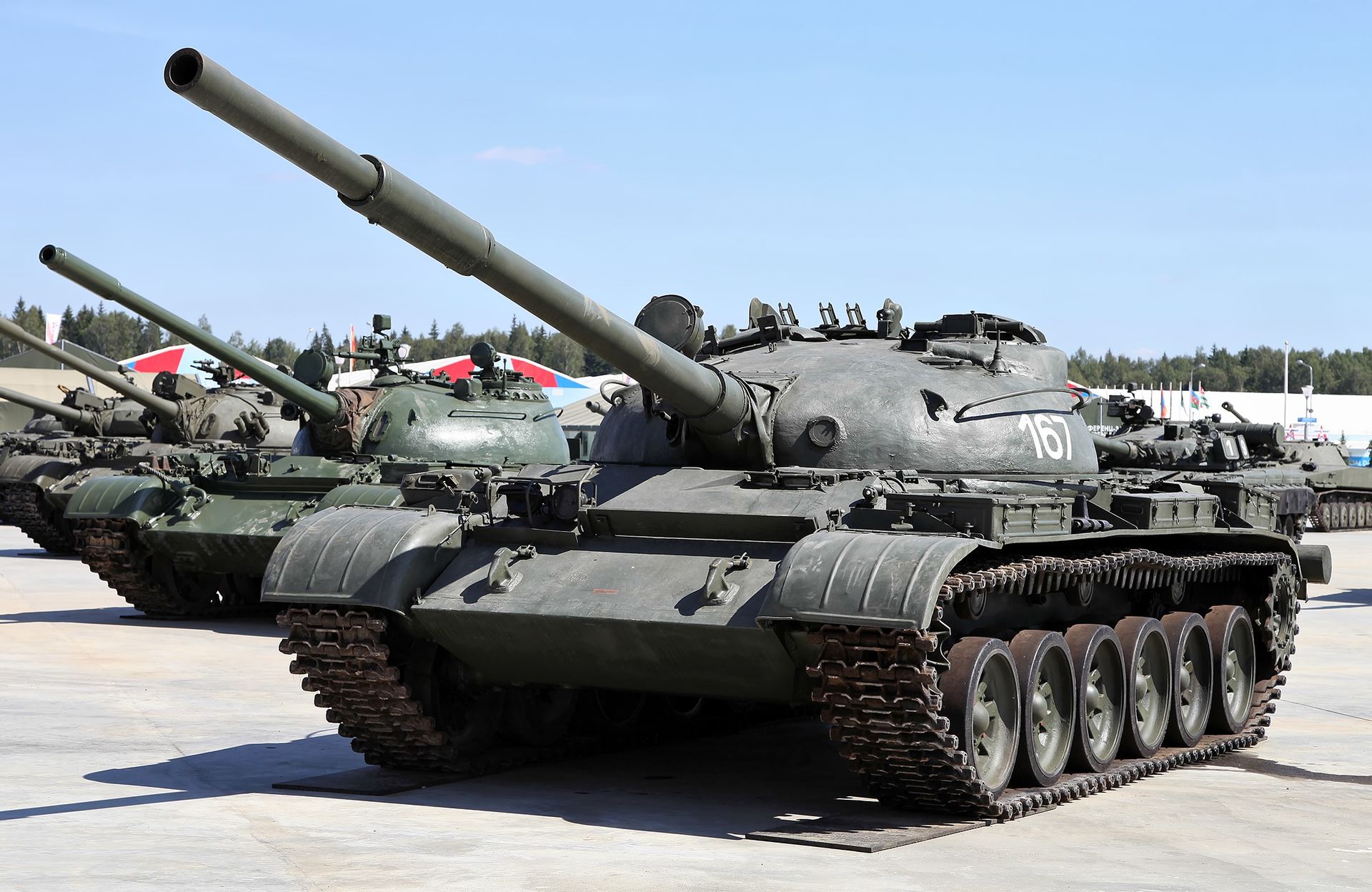
Object 167
In 1964, a project of an upgraded version of the Object 167 was proposed, featuring a more powerful 750hp engine, composite armor and an automatically loaded 125mm D-81 (2A26) gun. This advanced version was referred to as the Object 167M (it is also referred to as the T-62B).
The automatic loading mechanism was not adapted from the T-64 though, as Kartsev did not like it, amongst other things, due the design flaw where the T-64A carousel layout with the shell charge stored vertically prevented the crew from accessing the tank’s driver, making it very hard for them to get him out if he was wounded in battle. That was why his design bureau came up with a different design where the charge and the shell are stored horizontally on top of one another.
Compared to the T-64 automatic loading mechanism, the Nizhny Tagil design was simpler, more reliable and allowed the driver to get to the combat compartment without any additional actions required, improving his chances of survival considerably.
However, the fate of the Object 167M project was the same as the one of its predecessor. The drawings were shown to the people in charge but the military committee deciding the future of the Soviet armor preferred the T-64A as the future platform of choice. While not completely outclassed, the Object 167M design was inferior to the T-64 in some aspects and even the fact that it shared parts with the T-62 didn’t save it – the project was cancelled in 1964 without a single prototype built, leaving Kartsev with a sour aftertaste, but also with a number of advanced components developed, including the abovementioned automatic loading mechanism that was eventually physically tested in a T-62.
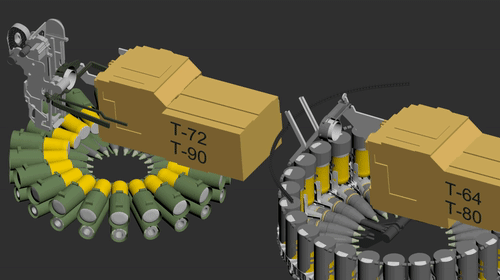
In the meanwhile, Kartsev’s team was tasked with modifying the original T-62 (Object 166) with a new suspension and engine, resulting in a vehicle called Object 166M. The reason for that was that, during the evaluation of the Object 167, one of the arguments against it was the reduced parts compatibility with the T-55 and T-62 tanks. Whether this argument was actually valid is a matter for debate (for some reason, nobody was bothered by the complete loss of compatibility between the T-55/62 series and the T-64), but the two Object 166M prototypes had a five-roadwheel suspension with three return rollers featuring at least some compatibility. The engine was replaced by the 640hp V-36F variant and during its 1964-1965 mobility trials, the tanks performed better than the T-62. It was, however, discovered that only a six-roadwheel suspension was the way to go – the improvements were not nearly good enough. The stage was set for the next act of the play that would end with a truly grand finale indeed.
In November 1967, the Soviet minister of defense industry, S.A. Zverev, visited Uralvagonzavod and was shown the newest developments of Kartsev’s design bureau. He was not thrilled by Kartsev showing him more alternative tank designs, taking it as another attempt by UVZ to steal Kharkov’s thunder while the army wanted their future tanks in production as soon as possible in order to face their western counterparts effectively. After all, the shock of the stunning Israeli victory in the Six Day War was only a few months old and still very fresh in their minds.
The minister liked the automatic loading mechanism very much and wanted to replace the Kharkov autoloader with it in the mass-produced variant of the T-64A, but Kartsev insisted on more upgrades (like a more conventional diesel engine) and, in the end, managed to talk him into promising several early T-64A models for him to experiment on. The different engine requirement went back to the 5TDF issues mentioned earlier in the article – this was basically still a “backup plan” for the T-64A production as the engine was still considered unreliable at that point in time – the final confirmation of the continued production of the 5TDF only came four years later, in 1971.
As a result of this meeting, five T-64A tanks arrived at Uralvagonzavod in January 1968 and Kartsev with his team got to work. The first “upgraded T-64A” prototype was ready in the summer of 1968, the second one in September. The design was still very similar on the outside to the original, but inside, the hydraulic automatic loading mechanism from Kharkov was replaced by Kartsev’s electric one and the 5TDF engine was replaced by a 730hp V-45K diesel from Chelyabinsk. It received the designation of Object 172.
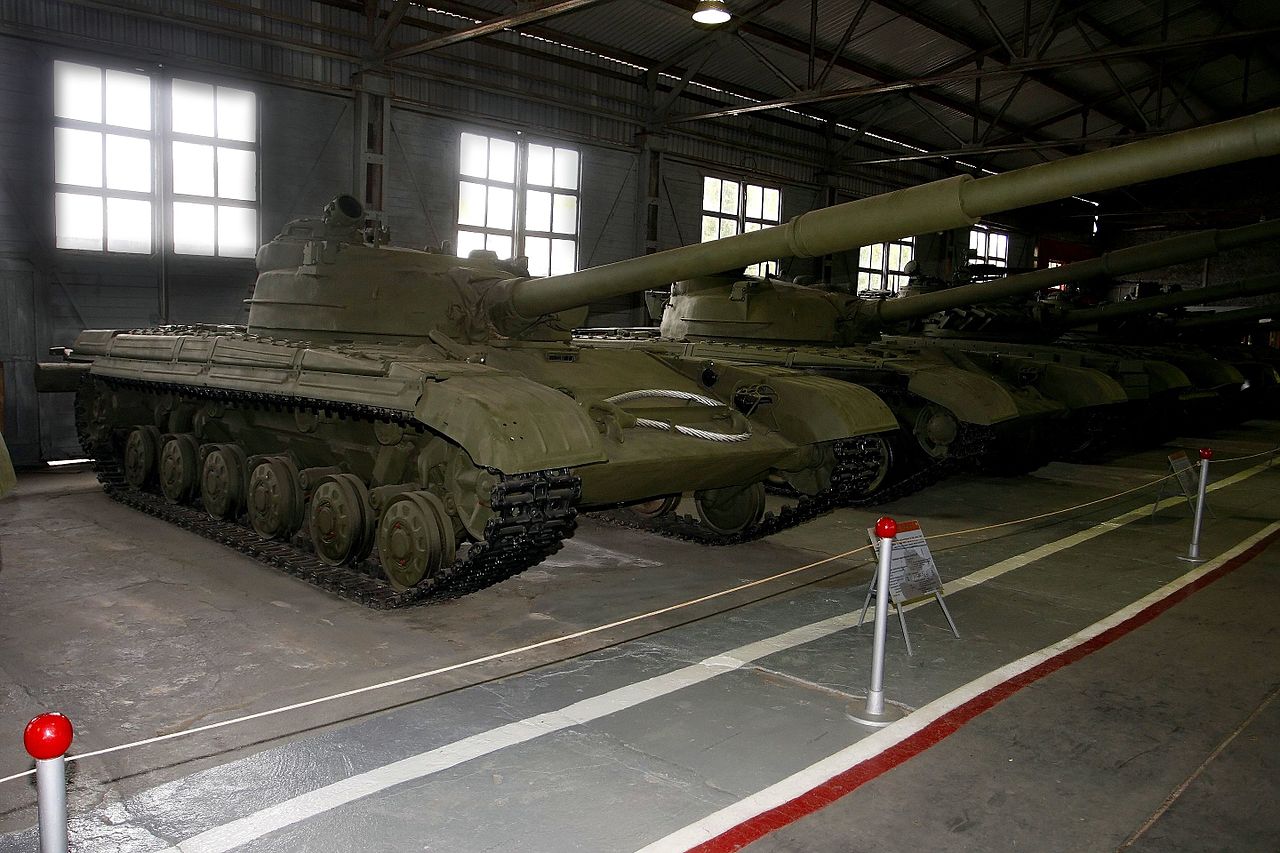
Object 172
Both tanks were thoroughly tested between 1968 and 1969, revealing a number of issues with the engine (air filtering, cooling) and the automatic loading mechanism that had to be fixed, which happened in 1970 when three more prototypes were assembled. In the end, twenty Object 172 tanks were built between the summer of 1968 and 1971 with the reliability of their components increasing gradually to service-acceptable levels. The automatic loader failure rate, for example, was one in 448 shots, which was statistically roughly matching the average lifespan of a D-81 gun (600 full caliber or 150 sub-caliber rounds).
Only one major weakspot remained – the original T-64A suspension. In 1969, V.N. Venediktov became the lead designer of Uralvagonzavod, replacing L.N. Kartsev, who had retired and moved to Moscow because his daughter was very sick and required extra medical attention only the Soviet capital could provide. Under Venediktov’s leadership, the suspension of the T-64A was replaced by a modified Object 167 suspension, resulting in a model called Object 172M.
The diesel engine was also tweaked further to produce 780hp and received a new designation – V-46. The tank also received a new, two-stage air-cleaning system comparable to the one of the T-62 as well as 40mm wider tracks. What remained of the T-64A was the hull (with its composite armor) and transmission.
The factory trials took place between November 1970 and April 1971. In May 1971, they were introduced to the minister of defense industry and the minister of defense and in 1972 they were subjected to a long series of arduous trials along with other tank types. The results of these trials included the following conclusions:
- Track lifespan was insufficient
- Most of the tank’s modules (including the engine) worked reliably (with some exceptions)
- Providing the abovementioned issues were addressed, the tank was recommended for active service and mass production
The tests, as a whole, were therefore successful and, as a result, the tank was officially accepted in service on August 7, 1973, under the designation of T-72 Uralwith the first 30 mass-produced vehicles built in Nizhny Tagil until the end of the same year.
The T-72 Ural weighed 41 tons and had, like the T-64A, a crew of three men. It was powered by a V-46 V12 supercharged diesel engine producing 780hp (power-to-weight ratio of 19 hp/t) and paired with a planetary gearbox, allowing it to go as fast as 60 km/h, although the actual road speed was usually not higher than 50 km/h and the off-road speed was between 35 and 40 km/h. The maximum reverse speed was 4 km/h. The tank consumed 3 to 10 liters of oil and around 240 liters of fuel per 100 km (260-450 liters if going off-road), giving it the range of 500 km at best (600 with additional fuel tanks).
The frontal hull armor was similar to the T-64 and the T-64A, consisting of:
- 80mm of armor steel
- 105mm of textolite
- 20mm of armor steel
The turret was, however, simplified. For the sake of cost cutting, the aluminum alloy from the prototype T-64A turrets was at first replaced by an internal layer of high hardness steel on some early pre-production models and, for the mass production, the turret was simply made of cast steel only, making it somewhat inferior to the T-64A. A composite turret only appeared on the T-72A from 1979 onwards. The Ural also had anti-HEAT side-screens installed.
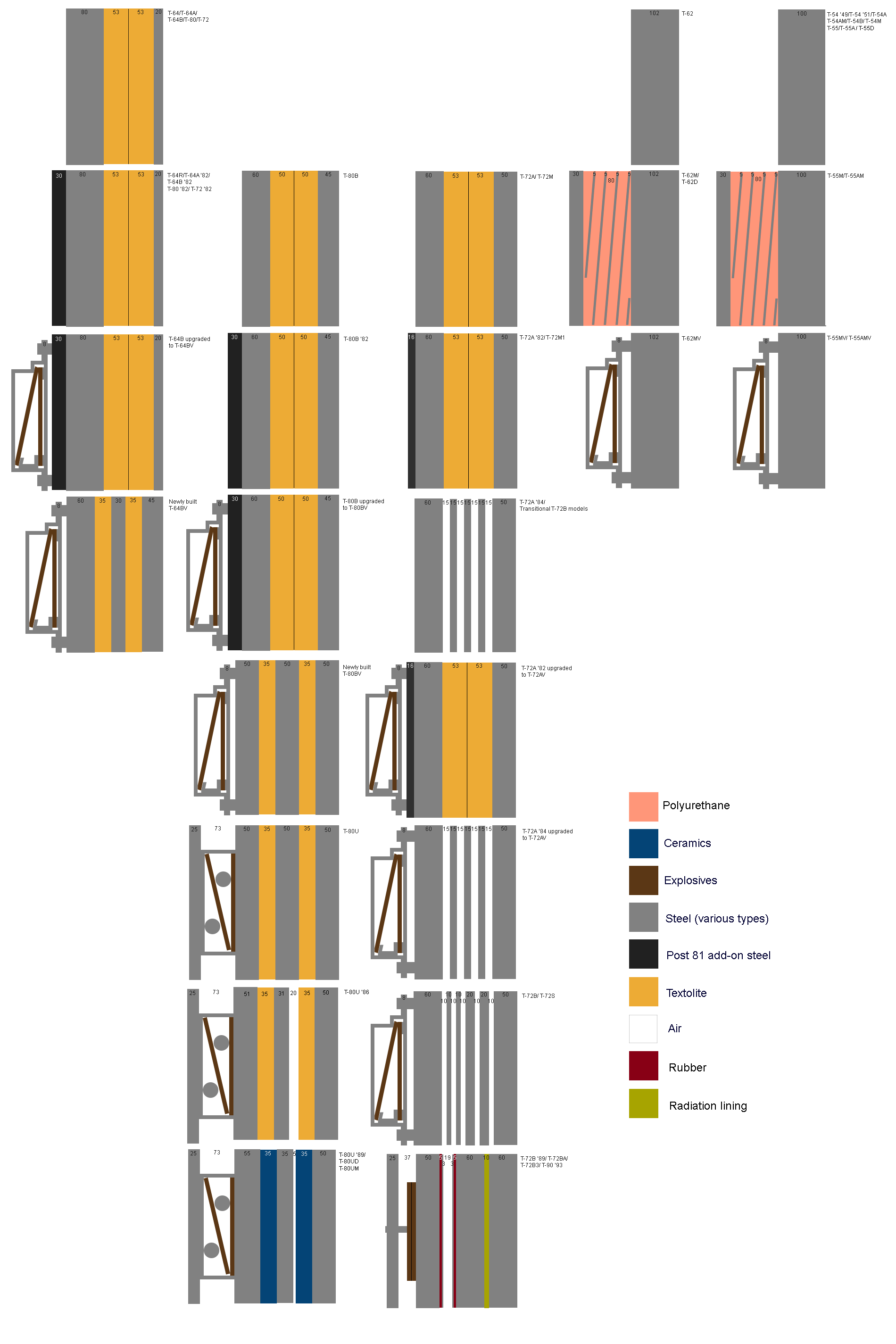
The tank was armed with the 125mm D-81TM (2A46) automatically loaded smoothbore L/50 cannon, resulting in firepower similar to the T-64A. The rate of fire with the electromechanical automatic loading mechanism was up to 8 rounds per minute. The maximum gun elevation value was +14 degrees, the maximum depression was -6 with the gun facing forward (-3 when backward).
The vehicle carried 39 rounds of ammunition, 22 of which were in the carousel. The gun was fully stabilized by the 2E28M stabilizer. For firing during the day, there were the TPD2-49 gun sights with a coincidence rangefinder and at night, the gunner could use the TPN-1-49-23 sights, although the range was limited from the original 4000-5000 meters to 800 meters in such a case. The effective range against a target that was 2 meters tall was 2100 meters with a sub-caliber round, or 900 meters with a HEAT round.
The tank was equipped with a NBC protection system, an automated fire extinguisher system and a smoke generator. The hull had mountings for a KMT-6 mine-clearing device.
Between 1973 and 1979 (when the production was replaced by a modernized version called T-72A), 5677 T-72 tanks were built (although the number possibly includes some of the early T-72A’s) and most of them went straight to the Soviet army.
However, between 1978 and 1980, approximately five hundred were built for in export specifications (as the only Soviet third generation tank of the three) called Object 172M-E and M-E1. Contrary to popular belief about the “monkey models”, there were almost no differences between the export version and the Soviet variant, although the Soviets were known to offer inferior ammunition for their export tanks. These T-72s were sold to, amongst other places, the Middle East, where they participated in a number of conflicts. An early Ural is not seen often these days, although and at least one was spotted in combat relatively recently in Syria.

T-72 Ural in Libya, 2016
Interestingly enough, the T-72 Ural was still officially classified as a medium tank, not as a main battle tank (the re-designation came later). What is even more interesting is, however, the fact that that its production cost per tank was actually even higher than for the T-64A.
At first glance, this might seem strange considering the elements of the T-72 were, in some cases, simplified, but, as you know, the production of T-64A was preferred over Kartsev’s designs and its unit cost was artificially reduced by the previous T-64 production. Not only was the T-64 churned out in large numbers, but much of its (already paid) production resources were transferred to the T-64A model.
Finally, there was a lot of politicking behind the scenes where, for example, a new director of UVZ who came in the late 1960s did not like the T-72 much (he was an old friend of Zh.Ya. Kotin from a competing bureau in Leningrad) and slowed the project wherever he could until he was finally outplayed by Kartsev, who, at the time, already had enough influence to bypass him.
And so it was that the Soviets ended up with a second tank of the same weight category. The original T-72 pattern was modernized in 1975 and, in 1979, it was replaced by the T-72A. It became one of the most widely produced tanks in the world with 39927 vehicles of all variants produced in the Soviet Union alone between 1973 and 1990 (compared to 12508 T-64s and 7006 T-80s for the same period of time).
Relatively recently (on August 7), the tank celebrated its 45th service anniversary and it seems that it will – upgraded, naturally – serve for at least a decade or two, a testament to the excellence of its original design.
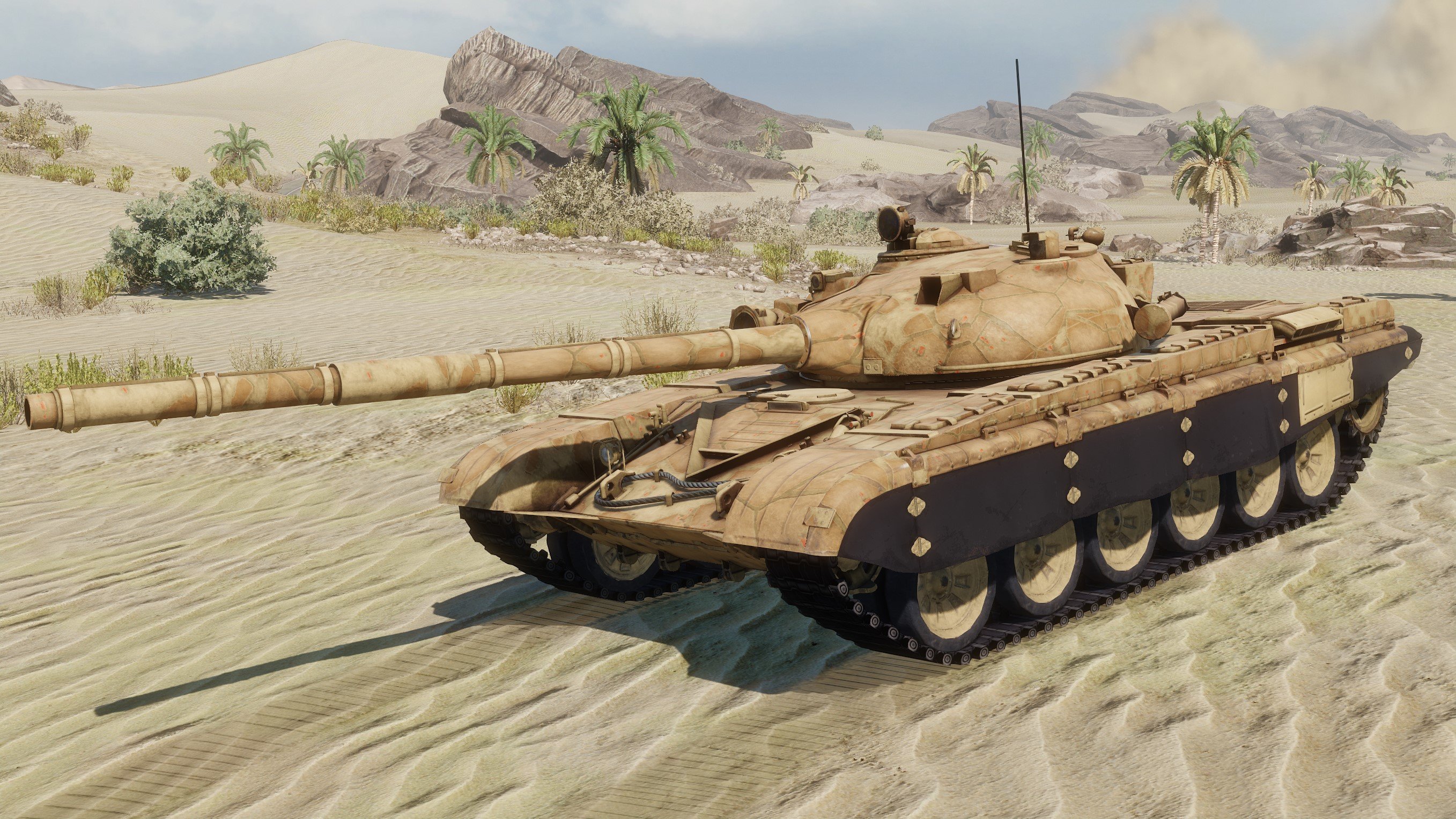
In Armored Warfare, the T-72 Ural is a Tier 4 progression Main Battle Tank. Gameplay-wise, as a short-range brawler, it matches the early T-64A model in the game and the choice between the two is, to a large extent, a matter of personal preference.
The Russian and Soviet MBTs are ideal for you if you prefer aggressive gameplay, to fight at medium to short distances and to take the fight to the enemy. They can easily lead the charge and are harder to hit thanks to their small size and excellent frontal sloped armor, but are quite unsuitable for defensive operations due to their poor gun depression and low reverse speed that does not allow them to retreat from danger effectively.
We’ll see you on the battlefield!




